
Nothing is constant, and the agility to pivot is crucial.
That’s why this year, we’ve tempered excitement around our annual crystal ball mulling, to create a 2022 Signals Report as opposed to a Trends Report, to reflect the immediacy that the world is currently operating on.
2022 really is all about new balls, new pencils and all change for the year ahead. Growing arms and legs to cope with a variety of new business models, channels and audiences provides a sense of the challenge facing the FS sector. Hence Scenario Planning for a multitude of directions is one signal that’s become a risk, if not part of business planning. While Responsible AI, Dynamic Customer Experiences, Employee Empowerment and Insta for Business are other new world signals that we believe 2022 will consolidate.
But it’s closing the ESG Delivery Gap that will be one of the most prominent themes of the year, with evidence the only antidote to the blah blah blah. Being clear on the business purpose: how the products and services and the resulting communications ladder back up, requires greater orchestration across the business and externally, which is not for the faint- hearted. That’s why the best FS businesses stay centred, by being clear on the objectives and goals being measured. Keep it simple within the chaos.
1. The ESG Delivery Gap
What’s going on?
Walking through Glasgow Airport during COP26 felt like being in a dystopian film, with poster after poster about net zero commitments and little else. Proof that peak rhetoric hysteria had been reached and detail is required. Yes, great strides have been made. The $100 trillion under management now backing the Glasgow Financial Alliance for Net Zero. The UK Government's plan to make London the world's first "net zero financial centre", asking the UK financial institutions and listed firms to publish their strategies on how they will transition to net zero by 2050. But disclosure is voluntary. With no assurance of a company's ESG information, there’s a chasm between talk and action.
Why does it matter?
Firstly, code red for humanity and the term “decisive decade” underline the urgency. We’ve been warned. The later we leave it, the greater the cost.
Secondly, ESG delivery is about protecting against risk. Providing disclosure outside financial statements, that ultimately need to be audited to prove legitimacy, will future-proof business, protect investments and secure jobs. Regulation will take time but has started, and shareholders will get a vote.
Thirdly, ESG delivery and transparency are expected and, if falling short, demanded by stakeholders – from employees, to investors, shareholders and activists. ESG delivery is your proof of relevance to society and the planet.
What to do?
Get serious about ESG evidence, prove the impact being made. To be credible, be transparent, and recognise not everyone will like it. Start by looking at your competitors and the outliers, and recognise that sameness isn’t a safe option. Unite the CSR and marketing teams; lean in to the data that already exists; and create evidence-supported communications that build the case for genuine change. It’s ok to acknowledge that it’s a journey. And listen to your people, those honest if harsh critics. Get it right and their pride will be infectious and invaluable. Evidence is the only antidote to blah blah blah.
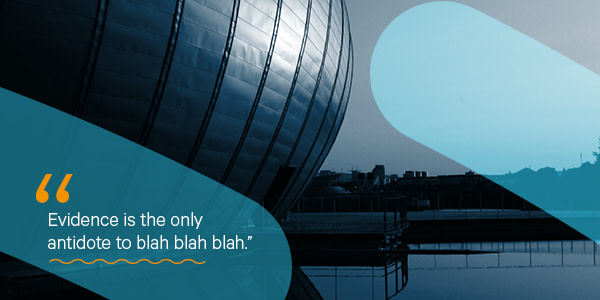
2. Employee Empowerment
What’s going on?
In danger of being binned as woke buzzwords, employee empowerment has entered the public conscience, with the pandemic elevating it further. Defined as “a management philosophy that emphasises the importance of allowing employees to make independent decisions and act on them”, employee empowerment was crystallised with the recent Great Resignation. A tipping point led to more job vacancies than seekers, as many reappraised working lives amid pandemic-related burnout or demands to return to offices. An employee’s market, with 1.1 million job vacancies in the UK (as of September 2021), the cards are stacked in the employees’ favour. The bottom line is they want more and know how to get it.
Why does it matter?
Enlightened employers have already grasped the nettle. Recognising the value of retaining a motivated workforce, many have invested in office design, or offer wellbeing services such as yoga or counselling. Recently, supermarket chain Lidl actively made its biggest-ever investment in workers’ wages. A clear signal of how much it values – and rewards – the commitment its employees continue to make in this pandemic economy. And that’s the crux. Companies have a golden opportunity to show their employees – preferably through meaningful, responsive actions – how much they value them and their commitment. If they miss it, they could end up missing their employees.
What to do?
Tuning in, leaning in and listening is a great place to start. The third part, listening, is the crucial part. A recent survey from insurer MetLife, highlighted that almost three quarters – 72% – of employers and 62% of employees agree the pandemic has changed their relationship. So, recognise the change, listen to the new demands and expectations, and then show empathy by acting. A bit like ensuring any sustainability policy doesn’t fall foul of greenwashing critique, it is imperative that employers act authentically and stay the course, as this “woke movement” isn’t going anywhere.
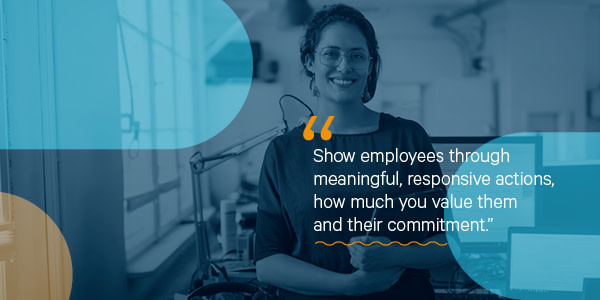
3. Hyper Local
What’s going on?
Have you ever walked into a room and spotted someone wearing the same shoes as you? Or discovered that you both share a love of running? When it happens, it creates an instant bond. They’re like me! We’re similar. I think I like them a little more. And yet, you don’t even know this person. So, why? A recent psychological study asked more than 600 people their opinions of strangers, based on little more than knowing if they were similar or not. The findings suggest that we subconsciously like, trust or attribute higher competence to people that we deem are alike. Herein lies the power of hyper local communications.
Why does it matter?
Many briefs ambitiously target “men and woman aged broadly between 25-65”. They may as well say, we’re narrowing our targeting to human beings with a head. In situations like this, the need is to drill down into sub-groups of consumers (or businesses in the B2B world), to create content that will work for that audience. But that’s just scraping the surface… Even using some very basic publicly available figures, if you are aged between 45 and 54 (eek, is that you?), one in four ISA holders has north of £20,000 in their pot. One in ten has over £50,000. And those pots are higher for those around London. Here’s where hyper local gets interesting. Curiosity is a bigger driver of action than fear. By merging data and a hyper local approach to comms – whether using it in digital channels, ATL, PR or social – you will create curiosity among your target audience and drive far more action than a broad brush approach. For those who love the marketing funnel, this approach is pushing the customer down the funnel fast.
What to do?
We are increasingly finding our clients taking a hyper local approach to their communication. Some, even in some extremely traditional sectors, are developing micro influencer campaigns on social channels, to offer hyper local content that both connects and engages. So a good place to start, is by asking, how hyper local are you being? Then ask yourself, would you prefer someone to talk to you about something that’s aligned to who you are as an individual? Or a generic subject that chimes with the other 68 million people in the country who happen to have a head…
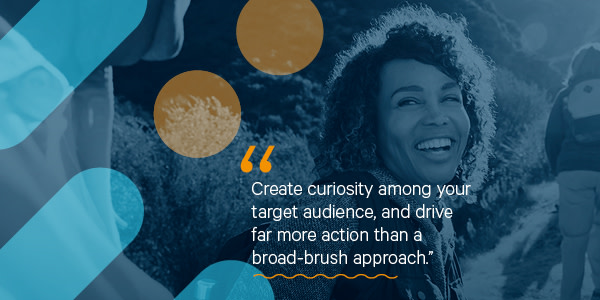
4. Direct Selling
What’s going on?
The last 24 months have seen a significant upswing in both those engaging in investment directly, and those businesses looking to reach consumers directly. The first digital natives (ie those born c 1994) are now approaching their mid-20s, while the pandemic has accelerated the trend for many FS companies to apply a digital first approach, augmented by human input, rather than vice versa. Yet at the same time, in the UK at least, separate research by both Openwork and the Council of Mortgage Lenders in 2019, suggested that most consumers would still choose face-to-face advice for financial planning.
Why does it matter?
There’s no denying that for many FS businesses, driving down the costs and inefficiencies in distribution has become a critical part of their change plans. But with so many options available in what is becoming an increasingly hybrid world, and with 56% of all UK wealth held by those 56 and older, it’s clear that just investing in a fantastic online platform will not be enough. Getting the balance right between an effortless and intuitive digital experience and genuine, personal, human interaction, will be vital.
What to do?
Think product, process and people. Firstly, think about the product or service that’s being provided. Is it something like general insurance, broadly understood by consumers? Or is it something broadly misunderstood – or even feared? Secondly, think about the journey – what are the steps to purchase/sign up? And finally, think about the audience. Really think about the audience. And remember that sometimes less human contact is better than more, and sometimes more contact is better than less. Even in one journey. Once you’ve thought about these three, then you can think about what combination of channels can be prioritised and put together.
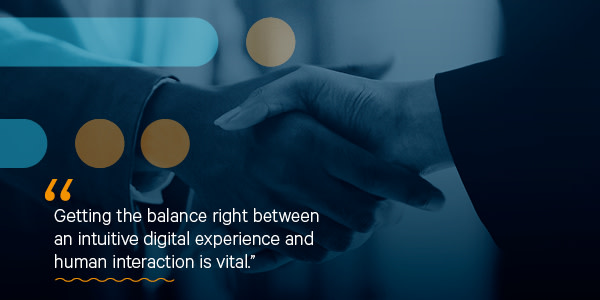
5. Dynamic Customer Experiences
What’s going on?
Customer experience has been transforming for some time, but the past couple of years have drastically changed customer expectations, with brands’ ability to deliver a seamless, straight-through journey being challenged on several fronts. With the variety of customer touchpoints now so vast, it’s become almost impossible to capture everything, certainly in real time. Developing dynamic strategies has become essential, as relying on month-to-month, or even week-to-week, customer views, simply isn’t enough. Brands need to develop far more agile CX journeys.
Why does it matter?
Your customers’ comfort is key. Brands need to be where their customers are, or at the very least to know where they are. Comfort has become the latest customer journey and build starting point. Comfort means creating consistency and ease of use, allowing customers to move forwards or back without friction. But it’s also so much more than that. Increased expectations of a customer’s journey mean it also must be fun, rewarding and have a touch of the unexpected. So, if your brand can be helpful, insightful, but also provide excitement along the way, that will secure customer intrigue to continue to travel further for longer.
What to do?
Just because the touchpoints have become complex, it doesn’t mean that your plan should become bigger and more complicated. Keep your CX vision simple. Ensure resources are focused on a clear objective, so that the team can stay on track. Accept that you simply are not going to be able to satisfy every single prospect. Choose who to engage with fully and make them feel special. Measure against a clear goal, so that you know what is working. It doesn’t matter if behaviour changes, the goal shouldn’t. If you can be tactically agile in your approach, the goal will remain attainable.
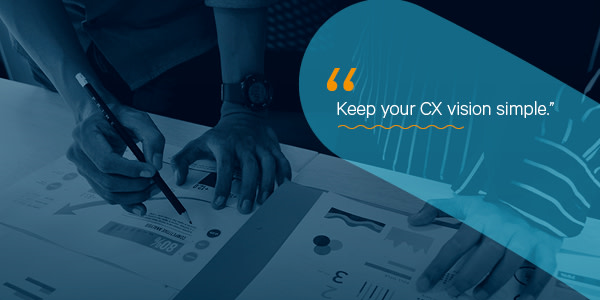
6. Responsible AI
What’s going on?
Today’s machine learning approaches to data-driven decision-making are rapidly transforming almost every industry and policy sector in the world. However, along with the undisputed benefits, these new technologies are raising ethical questions about the limits of their responsible use. Take machine learning code, programmed to achieve a specific objective by taking a series of defined and exploratory actions. In the case of media, the reward is say views, and the more the better. The program will have permitted actions such as who to target and the frequency of promotions, but not the frequency of views – which is what can create that visible digital spam.
Why does it matter?
Since AI programmes are built by humans, they can, and often do, have built-in bias from those who, either intentionally or inadvertently, introduce them into the algorithm. If AI algorithms are built with a bias in the training datasets, they learn from what is biased, and produce results that are biased. It’s leading to unintended consequences, such as discriminatory recruiting algorithms, or the failings of early facial recognition software, that generated questionable results that verged on racism. While AI increases the speed of decision-making, in many cases, it also exceeds our ability to keep up, and unchecked can lead to exploitation.
What to do?
While responsible data programming is still in its infancy, any organisation that uses or creates data and AI-driven programmes, must be aware that they need to be developed and trained responsibly. Best practice is to take a simple and pragmatic approach, that establishes a policy for the development and deployment of responsible data-driven decision-making programmes. This should cover: risk identification; monitoring activities and outcomes; and establishing restitution and insurance for any unintended financial and humanitarian consequences. As Will Griffin, Chief Ethics Officer at Hypergiant says, the responsibility is on the developers and designers.
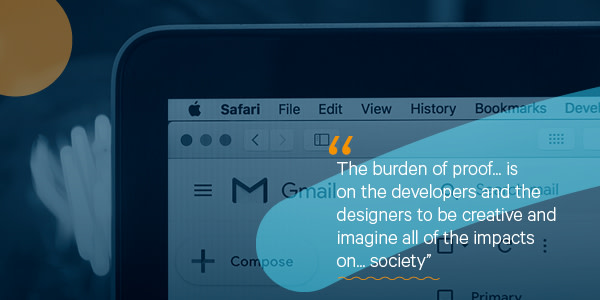
7. Scenario Planning
What’s going on?
Strategists are facing the most profoundly uncertain times in their careers, creating disaster scenarios that would have been unthinkable until recently. They are having to think beyond the balance sheet and the preservation of cash, and are now making ESG-related risk integral to their strategies. But especially in these tumultuous times, scenario planning doesn’t have to be an exercise in anxiety or futility.
Why does it matter?
Scenario planning is a well-established technique for coping with uncertainty, and should play a critical role this year. But executing successfully has never been as challenging as it is now. Most companies will have to consider more variables, and involve more decision-makers than they have in the past. Strategists will also need to place greater emphasis on measurement, the only way to recognise when changing conditions merit quick strategic adjustments.
What to do?
As communication strategists we need to be uniting the marketing, CSR and new product development strategies, to ensure that we have a full and transparent story of how we are addressing the risks facing the business, and how that impacts the service and the supply chain. A critical 2022 objective is to be able to show how the business is ready for several scenarios (or at least getting ready!). Crucially, companies need to disclose the results of their climate scenario analyses as part of broader disclosure around the strategic implications for their business. What this focus on new or surprising scenarios should not do, however, is obscure relevant long-term trends, or devalue important existing strategies.
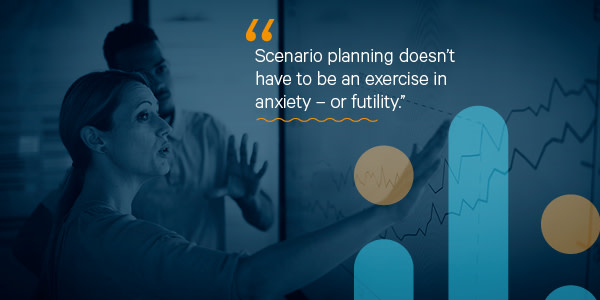
8. Insta for Business
What’s going on?
While often overlooked, savvy B2B brands are embracing Instagram, using the platform to build brand awareness, educate and inspire, attract talent, and market to Millennials – the app’s core audience. Sift through the cat videos and you’ll see the likes of IBM, Deloitte Digital and payments platform, Square, consistently engaging followers with “how to's”, employee profiles, product news – and more.
Why does it matter?
Instagram is growing in popularity for B2B brands. The Content Marketing Institute found that 56% of B2B content marketeers globally used Organic Instagram within the past 12 months (July 2020-July 2021), a 10% YoY increase. While this lags behind LinkedIn (93%) and Twitter (71%), usage is rising, particularly by SaaS companies and business influencers. What’s more, lower uptake means less competition, and a chance for B2Bs to benefit from early adoption. In addition, 36.2% of B2B decision-makers globally use Instagram to research new products or services. That surprisingly places it ahead of LinkedIn, according to Hootsuite.
What to do?
Transform your blogs into “snackable” content. Thought leadership, trends pieces and news can all be condensed into posts featuring bite-sized takeaways. To do this, consider carousels – scrollable multi-image posts that emphasise key points in a visually eye-catching way.
Capture your culture People engage with people – not faceless corporate brands. Demonstrate the playful side of your firm through images, videos and real-time stories, featuring your employees and events.
Convince with case studies Achieved something remarkable for a client? Tell your followers what you did and how you did it. Use carousels to showcase transformation stories, client testimonials and video-based product demos.

9. Digital PR
What’s going on?
We are living in a digital world, with “digital PR” now lauded as a necessary part of any marketeer’s arsenal. But many businesses remain unclear about exactly what it is or how to get some. Essentially, digital PR uses PR tactics to create content that generates headlines, but also secures links to your website. The approach is an audience-first one, and helps streamline the consumer journey from awareness to action, as well as boosting SEO and lead generation.
Why does it matter?
The average person’s thumb scrolls through 52 miles of content every year, with the pandemic causing an ever-greater surge in online news and social media consumption. This behaviour change has affected how we interact with brands and make purchasing decisions, with 80% of sales now taking place online. In the FS sector – which is at the forefront of digital transformation, spearheaded by fintech - this figure will be even higher. Thumb-stopping, frictionless content is now expected. Which is why driving traffic to your digital estates over your competitors and improving SEO, have become a vital part of any PR strategy.
What to do?
Develop an integrated digital strategy by: getting to know your audience and potential customers online, providing them with a personalised experience, and then accurately measure the results. What it requires is smart, inspirational, engaging and educational campaigns, that cut through the noise of the internet and claim a greater share of voice across editorial and social channels. Digital PR campaigns can also be measured for success with an accuracy that traditional PR can’t always muster. So, enjoy knowing what’s working, with proven and solid ROI rooted in real time metrics and analysis.

10. Simplicity
What’s going on?
It’s estimated that the average person in 2021 is exposed to as many as 10,000 advertising messages every single day. And for modern brands, ads are just the tip of the iceberg. The consumption of online content means that consumers exist in a near-constant state of exposure to some variety of branded messaging. It’s a noisy, crowded, competitive world for brands, with an estimate that for every 14 seconds a user spends on a particular website, an ad hosted on that page is viewed for an average of just one second.
Why does it matter?
These figures are frequently cited by advertising teams, as they undergird a client’s need to be bold, creative and attention-grabbing. But that thinking can easily translate into trying to shout louder than the competition. In fact, the key to being heard isn’t to be louder – it’s to be clearer. From the big idea to the art direction to the activation, brands must embrace simplicity and singlemindedness. The US Navy used to call this the KISS Principle: “Keep it simple, stupid.” In other words, the best systems are simple and not unnecessarily complicated. The same goes for ideas.
What to do?
Einstein is quoted as saying, “You do not really understand something unless you can explain it to your grandmother.” Even if a campaign has more moving parts than the Theory of Relativity, start with a clear proposition that your audience can instantly understand. Resist complexity; select the most compelling reasons to believe and leave the rest out. And remember – this isn’t relevant just to consumer comms. In fact, if you are writing a B2B2C message to a technically minded audience, it applies tenfold – it’s deceptively easy to slip into complexity. In other words, “Keep it simple, stupid.”
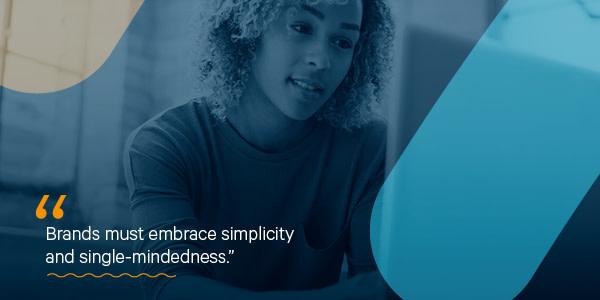
Let’s see what 2022 brings and which signals will dominate.
With Purpose now charting the course for so many, we’re hoping this year leads to more depth around, and evidence of, the ESG journey, and truly transforming the world of finance for the better. As ever, the values of value, fairness and transparency remain vital. Here’s to a healthy respect being shown to those brave enough to aim high and act responsibly.
If you’d like to discuss how these signals will affect your business and communications, please get in touch at hello@teamspirit.uk.com.
Related News



